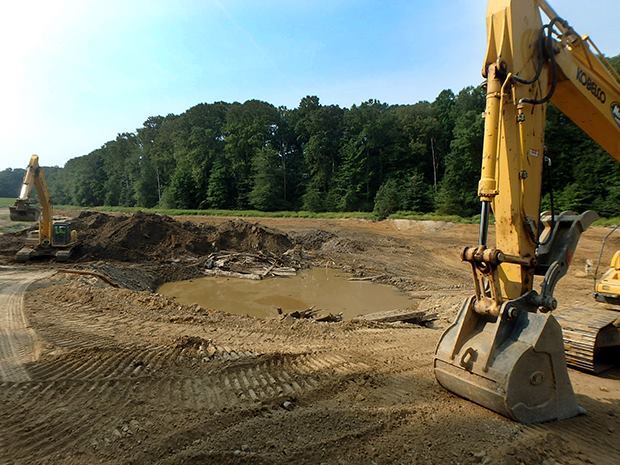

The Cornell students are working with Mahan Rykiel Associates, a Baltimore landscape architecture firm, and the Maryland Port Administration, to suggest clear fixes for this muddy issue.

The graduate design students in landscape architecture are in the business of ecological and civic innovation in the built environment, so they have some of the necessary tools to tackle a new problem like this.” “It might be to renew parks or use it in ways we have yet to imagine. “We are all new at figuring out how use this mud,” said Davis. “Think mud – but with a civic purpose – to support the life of the city,” said Davis, a fellow in Cornell’s Atkinson Center for a Sustainable Future. Maryland – aiming to become a zero-waste state – is the first state looking for alternative uses for sediment. This new regulatory guidance has made it possible to consider beneficial uses of sediment dredged from the harbor for the first time. Larry Hogan affirmed those guidelines with an executive order last June. Last spring, Maryland’s Department of the Environment issued guidance for innovative and beneficial use of the dredged harbor mud, said Davis. The Port of Baltimore is part of a complex estuary where legacies of labor, innovation and ecological justice overlap with contemporary issues of public health and rising seas, said Brian Davis, assistant professor of landscape architecture, in his syllabus for Public Sediment: Remaking the Role of Mud in Baltimore. “We are seeking possible interventions that lie in the power of mud.” It potentially could improve degraded wetlands in the middle branch of the Patapsco River or get used to construct storm surge or sea level rise protections for vulnerable communities,” said Thackston Crandall, MLA ’18. “Rather than be treated as a waste product, this material could ameliorate ecosystems or urban parks. This is the first time that professionals or students have wrestled with finding environmental uses for dredged material from harbor navigation channels on a large scale. The class task: Find eco-friendly uses for the dredged material. 26-28 to study how 1.5 million cubic yards of sediment pulled out of the navigation channels gets processed annually. A dozen Cornell graduate students will offer environmental solutions after visiting the Baltimore Harbor and Maryland’s Patapsco River Oct.


 0 kommentar(er)
0 kommentar(er)
